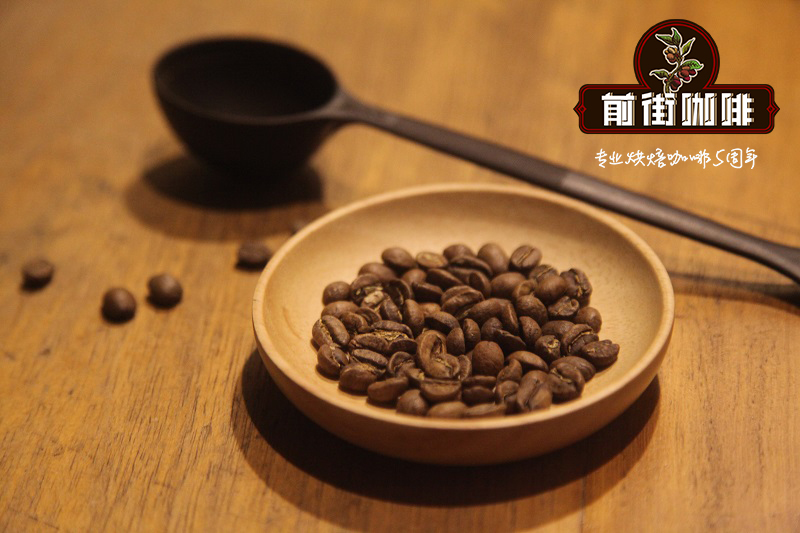What are the characteristics of Zimbabwe coffee beans? Zimbabwe coffee beans taste sour like Kenya.

Professional coffee knowledge exchange more coffee bean information please follow the coffee workshop (Wechat official account cafe_style)
Front Street-Zimbabwe Coffee introduction
Located in the interior of southeastern Africa, Zimbabwe is surrounded by the Victoria Falls, the Zambesi River River, the Kariba Dam Dam in the upper Zambezi River and Lake Kaliba, which blocks the accumulation of water from the river, forming the northern border of Zimbabwe, bordering Zambia.
Zimbabwe is bounded by Mozambique in the east, Botswana in the southwest and South Africa in part, bounded by the Limpopo River River. The area is about 391000 square kilometers.
Zimbabwe only began to grow coffee in the early 20th century, but it was almost wiped out by insect pests around 1920. Since 1950, with the migration of coffee farmers from India and Kenya to Zimbabwe, Zimbabwe has the knowledge and technology to produce quality coffee. It was only when farmers in southern Africa set up coffee plantations around the 1960s that they slowly began to grow them on a large scale.
Coffee from Zimbabwe may be relatively rare now, but in fact, Zimbabwe used to produce about 15000 tons of high-quality coffee beans like Brazil, Kenya and Ethiopia. At the peak of coffee production in Zimbabwe, the coffee industry employed more than 20000 people, contributed more than 2 per cent of GDP and generated foreign exchange earnings of more than US $54 million. After 2000, due to political unrest and other reasons, Zimbabwe's coffee industry fell off a cliff.
Coffee cultivation in Zimbabwe began relatively recently, in the 1960s, when farmers in southern Africa set up coffee plantations. The sour and fruity flavors of Zimbabwean coffee are similar to those of Kenyan coffee, but the concentration is higher and the wine flavor and flavor are stronger than Kenyan coffee.
The coffee-growing areas of Zimbabwe are mainly distributed in the northeast of the Chimanimani Mountains. The mountain range is located near the border between Zimbabwe and Mozambique and is especially famous for Qipingka, which is located on the eastern plateau. In addition, Pinacol, Papir, Lalus and so on, are also a handful of large farms. Among the eight famous farms, Pinacol Farm is almost so picky about its coffee beans that it can no longer be picky.
In short: Qianjie is a coffee research hall, happy to share the knowledge about coffee with you, we share unreservedly just to make more friends fall in love with coffee, and there will be three low-discount coffee activities every month. The reason is that Qianjie wants to make more friends drink the best coffee at the lowest price, which has been Qianjie's tenet for 6 years!
END
Important Notice :
前街咖啡 FrontStreet Coffee has moved to new addredd:
FrontStreet Coffee Address: 315,Donghua East Road,GuangZhou
Tel:020 38364473
- Prev

Fruity coffee where the sun is good Yega Chuefei coffee is full of fruit juice
Professional coffee knowledge exchange more coffee bean information please follow the coffee workshop (Wechat official account cafe_style) front street-Yega Xuefei Solar G1 Super introduction Ethiopia (Ethiopia) is recognized as the birthplace of Arabica coffee, historical data can be traced back to the 4th-5th century AD, the first found in the forest coffee, gradually artificially cultivated for household use
- Next

What's the flavor of Zimbabwe coffee? a brief introduction to the flavor of Zimbabwe coffee beans.
Professional coffee knowledge exchange more coffee bean information please follow the coffee workshop (Wechat official account cafe_style) front street-Zimbabwe Coffee introduction Zimbabwe is located in the interior of southeastern Africa, Victoria Falls, the Zambe River (Zambesi River), the upper Zambezi River Kaliba Dam (Kariba Dam) and the dam to block the accumulation of the river formed by Lake Kaliba
Related
- Beginners will see the "Coffee pull flower" guide!
- What is the difference between ice blog purified milk and ordinary milk coffee?
- Why is the Philippines the largest producer of crops in Liberia?
- For coffee extraction, should the fine powder be retained?
- How does extracted espresso fill pressed powder? How much strength does it take to press the powder?
- How to make jasmine cold extract coffee? Is the jasmine + latte good?
- Will this little toy really make the coffee taste better? How does Lily Drip affect coffee extraction?
- Will the action of slapping the filter cup also affect coffee extraction?
- What's the difference between powder-to-water ratio and powder-to-liquid ratio?
- What is the Ethiopian local species? What does it have to do with Heirloom native species?

